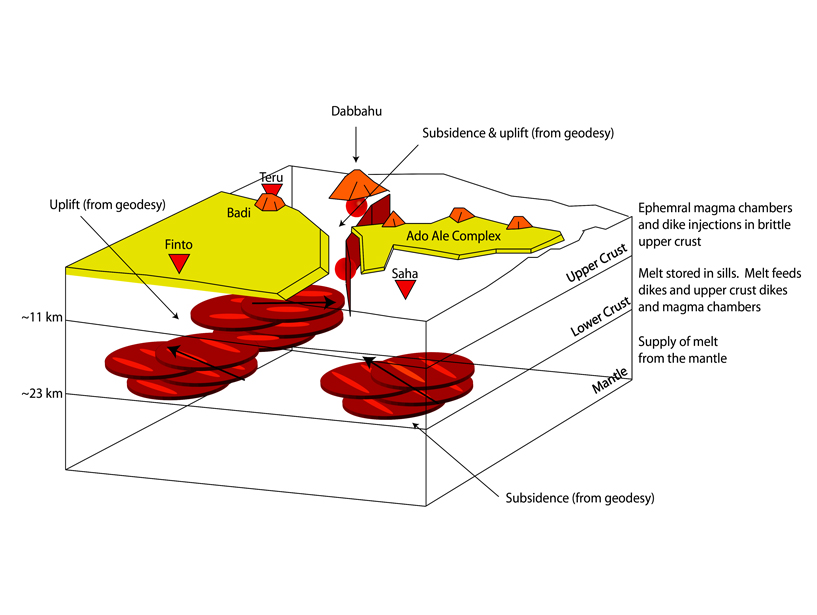Depending on rock composition, temperature, pressure, and other factors, seismic waves propagate through the crust at different speeds. These factors affect primary and secondary seismic waves to a different degree. Building on this distinction, researchers have developed a technique known as H-ĸ stacking that uses energy bouncing in the crust to estimate the ratio of primary to secondary wave speeds and measurements of crust thickness to estimate crust properties.
However, H-ĸ stacking ignores an important known factor affecting seismic wave propagation. In new research, Hammond shows that this omission seriously affects the utility of H-ĸ stacking.
As previous research has shown, most crustal materials that seismic waves pass through are anisotropic. That is, a wave’s speed is affected by the direction and angle of passage through the crust. In previous iterations, researchers using H-ĸ stacking have ignored this effect, instead treating seismic waves isotropically. However, because primary and secondary waves are affected differently, the modulating effect of anisotropy has the potential to strongly skew the primary to secondary wave speed ratio.
In his paper, the author outlines a new version of H-ĸ stacking designed to account for anisotropy. More than just clearing up a potential source of error, an H-ĸ stacking approach that accounts for anisotropy opens up the technique to new uses.
One important source of anisotropy in the crust is the presence of melt inclusions—pockets of melted or partially melted material. How melt is stored and moves throughout the crust is a key factor in determining how volcanoes erupt.
Applying his technique to observations from the Afar Depression in Ethiopia, the author found that his modified H-ĸ stacking approach could be used to estimate the presence and properties of melt inclusions within the crust. (Geochemistry, Geophysics, Geosystems, doi:10.1002/2013GC005186, 2014)
—Colin Schultz, Freelance Writer
Citation: Schultz, C. (2015), A modified technique to remotely detect subsurface melt, Eos, 96, doi:10.1029/2015EO025719. Published on 5 March 2015.
Text © 2015. The authors. CC BY-NC 3.0
Except where otherwise noted, images are subject to copyright. Any reuse without express permission from the copyright owner is prohibited.

